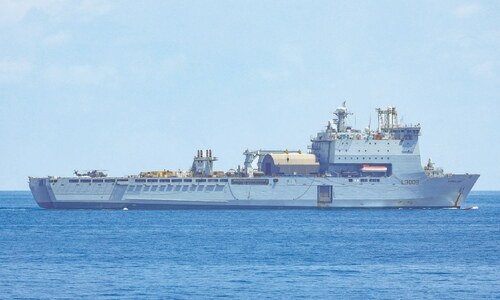With a population of approximately 600 million, a combined GDP of over $2 trillion, and still-impressive growth rates, Southeast Asia attracts global attention. Everyone wants a piece of the cake.
Business representatives from China, Japan, India, Europe, America and Australia throng Southeast Asia’s airports, hotels and conference centres, hoping to secure even a small share of the expanding market.
True, the crisis in Thailand worries many as does ethnic violence in Myanmar. Two members of the Association of Southeast Asian Nations (Asean), Vietnam and the Philippines, are entangled in an acrimonious territorial dispute with China in the South China Sea. The region is a mix of very rich states like Singapore, emerging powers like Indonesia and Malaysia and poor nations such as Cambodia and Laos.
And yet there is a mystique about Asean — members include Brunei, Cambodia, Indonesia, Malaysia, Laos, Myanmar, the Philippines, Singapore, Thailand and Vietnam — that fascinates a watching world. In recent years, Asean’s ambitious plans to boost region-wide economic integration — an Asean Economic Community is expected to be established by end 2015 — generated excitement in global business.
That interest has gone up to a new level since Asean started to focus on ensuring “connectivity” or link-ups between the region’s transport infrastructure, rules and regulations and citizens.
The Master Plan on Connectivity adopted by Asean leaders in Oct 2010 is the new buzzword across the region. With its focus on three dimensions — physical, institutional and people-to-people — the Master Plan underlines that while hard infrastructure is important, an enabling regulatory framework and a shared identity also play a crucial role in better connecting Asean countries with each other and with the rest of the world.
The Master Plan is certainly impressive. The priority now is to turn it into reality.
Certainly governments across the region are convinced of the economic, political and social importance of the initiative. As such, as the drive to establish an Asean Economic Community by end-2015 picks up speed, with countries working to achieve intra-regional free movement of goods, services, investment, and skilled labour, as well as a freer flow of capital, Asean’s connectivity agenda is a top priority.
Implementing the Master Plan requires money, technical assistance and region-wide as well as global partnerships. Not surprisingly, connectivity is top of the agenda in Asean’s recent dealings with key partners including China, Japan and the United States.
The European Union has also joined the important conversation, giving a further boost to already-expanding Asean-EU relations. The EU’s vast experience in establishing a single market, building transport networks and connecting member states and regions is unique — and of great value to Asean.
Asean’s focus on the role of public-private partnerships in implementing the Master Plan is strong, with the organisation’s Secretary General, Le Luong Minh, recently underlining the need to increase private sector investment in the region to address the massive financing requirements for Asean Connectivity projects.
Through public-private partnerships, governments would be able to work with the private sector to close funding gaps and tap expertise to develop sustainable and high-quality infrastructure. As such, said Minh, more efforts are needed “to create a favourable environment for PPPs, which in turn, will support our Asean Connectivity agenda.”
Asean’s many partners, including the EU are clearly banking on — and backing — sustained growth and development across the region. As Cesar V. Purisima, Finance Secretary of the Philippines, said in a recent speech at the International Institute for Strategic Studies in Singapore, “Asean is in the right place of the world for the next 30 to 50 years…If looked at as a single country, Asean will be among the top 10 economies in terms of population, and probably among the youngest.”
Asean cannot be faulted for its ambitious integration agenda and for making connectivity a top priority in its drive to set up an economic community.
The way ahead will be challenging, however, as the region seeks to boost intra-regional trade, build modern and efficient infrastructure, harmonise different regulations and create bonds between its citizens.
The participation of the private sector in meeting these and other goals will be crucial. As such, Asean must make it easier for businesses — national and foreign — to operate in the region.
As Purisima pointed out, “Businesses will boom if Asean integrates successfully but this is not possible without their participation... That is the challenge for the private sector, to become a catalyst for integration itself.” That is also the message of Asean’s many foreign partners.
—The writer is Dawn’s correspondent in Brussels.
















































Dear visitor, the comments section is undergoing an overhaul and will return soon.